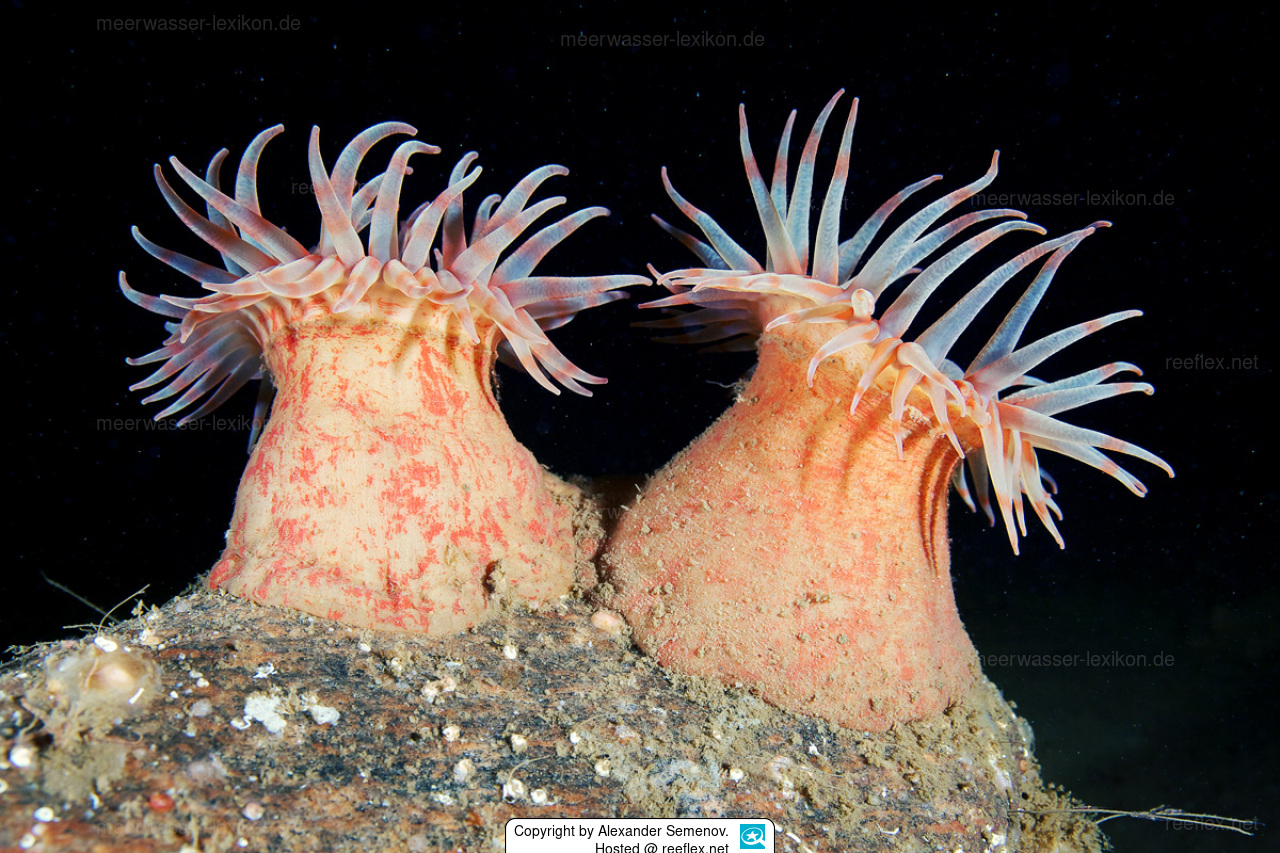Info
Stomphia coccinea (Müller, 1776)
The swimming anemone or scarlet anemone Stomphia coccinea is widely distributed in northern seas and in the North Pacific. Stomphia coccinea has a medium size, shallow water specimens in the North Pacific do not grow larger than 3 cm, although there are larger specimens at greater depths.
Tentacles: about 70 in number, a little longer than the radius of the oral disk. The body wall is smooth, usually beige or reddish, sometimes with irregular darker spots or lines. The oral disc is of the same color, but usually paler. Small white spots and radial red lines can often be seen on the tentacles.
The species always lives on stones and rocks, it is never buried in the sand. The anemone usually occurs at depths of more than 10 meters.
The body shape of Stomphia coccinea resembles young specimens of another North Pacific species, Cnidopus japonicus; young specimens of Cnidopus japonicus can be easily recognized by white narrow radial lines on the oral disc. However, the white lines disappear in older specimens.
When predators approach, such as the broad-black thread snail (Aeolidia papillosa), the actinia detaches itself from its substrate and "jumps" away a little due to the curvature of its body on its basal disk. It appears to feed on various jellyfish.
Synonymised names:
Actinia carneola Stimpson, 1853
Actinia coccinea Müller, 1776 (superseded original combination)
Actinia nitida Dawson, 1858
Cylista coccinea (Müller, 1776)
Kylindrosactis elegans Danielssen, 1890
Sagartia repens Danielssen, 1890
Stomophia coccinea
Stomphia carneola (Stimpson, 1853)
Stomphia churchiae Gosse, 1859
The swimming anemone or scarlet anemone Stomphia coccinea is widely distributed in northern seas and in the North Pacific. Stomphia coccinea has a medium size, shallow water specimens in the North Pacific do not grow larger than 3 cm, although there are larger specimens at greater depths.
Tentacles: about 70 in number, a little longer than the radius of the oral disk. The body wall is smooth, usually beige or reddish, sometimes with irregular darker spots or lines. The oral disc is of the same color, but usually paler. Small white spots and radial red lines can often be seen on the tentacles.
The species always lives on stones and rocks, it is never buried in the sand. The anemone usually occurs at depths of more than 10 meters.
The body shape of Stomphia coccinea resembles young specimens of another North Pacific species, Cnidopus japonicus; young specimens of Cnidopus japonicus can be easily recognized by white narrow radial lines on the oral disc. However, the white lines disappear in older specimens.
When predators approach, such as the broad-black thread snail (Aeolidia papillosa), the actinia detaches itself from its substrate and "jumps" away a little due to the curvature of its body on its basal disk. It appears to feed on various jellyfish.
Synonymised names:
Actinia carneola Stimpson, 1853
Actinia coccinea Müller, 1776 (superseded original combination)
Actinia nitida Dawson, 1858
Cylista coccinea (Müller, 1776)
Kylindrosactis elegans Danielssen, 1890
Sagartia repens Danielssen, 1890
Stomophia coccinea
Stomphia carneola (Stimpson, 1853)
Stomphia churchiae Gosse, 1859







 Alexander Semenov, Russland
Alexander Semenov, Russland






